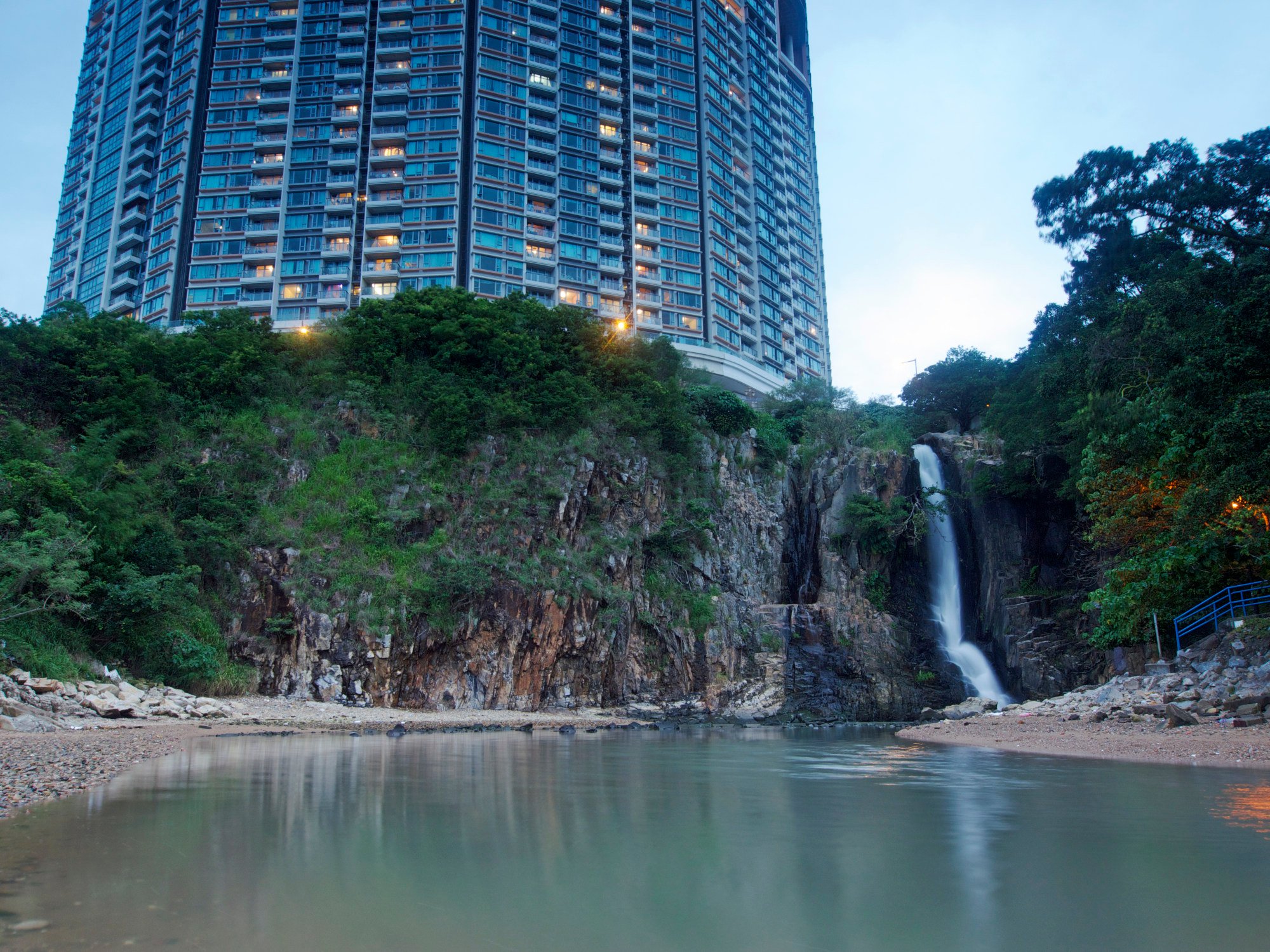
Hong Kong ‘a barren rock’? Who coined the phrase that contrasted the new colony’s beginnings with the extraordinary city it became?
- The phrase ‘a barren rock with nary a house upon it’, used to describe Hong Kong Island, was attributed to a British prime minister, Lord Palmerston
- In fact it was a British naval surgeon and botanist who came ashore around Waterfall Bay in 1816 who wrote of seeing ‘barren rocks’ and ‘miserable mud-huts’
Hong Kong Island had been known to European mariners since at least the early 17th century. East Lamma Channel waters – in particular, the sheltered passage between Ap Lei Chau and Shek Pai Wan (modern Aberdeen) – and the Pok Fu Lam coastline around Waterfall Bay were accurately surveyed and marked on Admiralty charts in 1742, during Commodore George Anson’s global circumnavigation, extensively described in A Voyage Round the World (1748).
But beyond Waterfall Bay’s reliable, year-round supply of potable fresh water, the island itself – merely one among hundreds of others scattered across the Pearl River entrance – remained undocumented in Western sources.
That famously dismissive Victorian quote – that Hong Kong Island was merely “a barren rock with nary a house upon it” – became a derisive metaphor for the new colony, almost as soon as the British flag was raised there in 1841.
Over time, this expression starkly contrasted Hong Kong’s initially unlikely early beginnings with the extraordinary city that subsequently evolved.
The China Coast artists like George Chinnery who found a ready market
Attributed to 19th century British prime minister Lord Palmerston – who had never been anywhere near the place – the scanty details that informed his opinion most likely originated from a few brief descriptions found in a much larger work, published some two decades earlier.
In 1816-17, British surgeon and botanist Clarke Abel accompanied the Amherst diplomatic mission to China – the second abortive attempt by Britain to regularise diplomatic relations between the two nations in the new global power dynamic that followed Napoleon’s decisive defeat in 1815.

Before proceeding north, HMS Alceste anchored off Hong Kong in July 1816 to take on water.
“Looking from the deck,” Abel wrote, “early on the following morning, I found that we were in a sound formed by some small islands, by which it was landlocked in every direction; and of which Hong-kong is the principal.
“As seen from the ship, this island was chiefly remarkable for its high conical mountains, rising in the centre, and for a beautiful cascade, which rolled over a fine blue rock into the sea.

“I took advantage of the first watering boat to visit the shore, and made one of these mountains and the waterfall the principal objects of my visit.”
Abel’s experience of Hong Kong Island was limited to the immediate vicinity of Waterfall Bay. Extensively cultivated areas with more promising characteristics – such as Wong Nai Chung – were unvisited during his brief sojourn, and therefore remained unknown and undescribed. What he did see was unimpressive.
“I may now be expected to give some description of the scenery and inhabitants of Hong-kong, but of either I have little to say. Its scenery is composed of barren rocks, deep ravines, and mountain-torrents, but presents few characters of a very picturesque description.
Heirloom plates, once the pride of their owners, later sold second-hand
“Of its inhabitants none were seen but some poor and weather-beaten fishermen, spreading their nets, and drying the produce of their toils on the rocks which supported their miserable mud-huts.
“Its cultivation corresponded with the apparent state and number of its population. Patches of rice, small plantations of yams, and a little buckwheat, were all their visible means of vegetable support.”
Narrative of a Journey in the Interior of China (1818), Abel’s influential account of the Amherst mission – which included a shipwreck and pirate attacks, among other adventures – also contains detailed notes from the first documented botanical ramble ever conducted on Hong Kong Island.
These records, combined with observations made during his Pok Fu Lam excursions – “barren rocks” and “miserable mud huts” – remained the only significant information source for the place until the first Anglo-Chinese war broke out in 1839.

